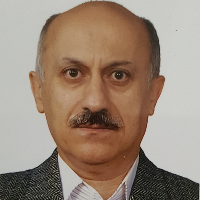An Experimental Study on the Performance of Rocking Foundations Constructed on Non-Plastic Silts Using 1g Shaking Table Tests
Author(s):
Article Type:
Research/Original Article (دارای رتبه معتبر)
Abstract:
The old bridges were mainly designed for gravity loading with partial consideration of seismic or lateral loads, which were vulnerable to seismic effects. There are many examples of damage to the elements of superstructures and underground structures of bridges and in some cases complete collapse. Recently, researchers have proposed the concept of a rocking foundation for column-foundation in bridges. A rocking foundation uses soil failure to protect the structure during seismic loading. In this way, this foundation can act as a fuse and partially isolate the bridge system from serious earthquake damage. Previous research has mainly focused on the behavior of rocking foundations located on sandy soils, and in a few cases, sandy clay soils or clay soils, while not much attention has been paid to the performance of foundations constructed in fine-grained non-plastic silty soils. In this research, the seismic performance of rocking foundations that constructed on silty soils has been investigated using physical modeling on a small scale and by shaking table tests. The experimental tests in this research consist of an "SDOF superstructure-foundation" system that is used to model the behavior of a bridge pier. To this aim, eight series of shaking table tests were carried out in different conditions, including different frequencies of input motions and different A/Ac values. Four different values (1.81, 2.37, 2.52 and 2.69) were employed to investigate the effects of the A/Ac parameter. To this aim, the concentrated masses of 60, 30, 25 and 20 kg are used in the model. In addition, to achieve rigidity against static and seismic loads and avoid any deformation, the thickness of the used steel plates was selected at about 4 mm, which ensures sufficient rigidity of the pier with respect to induced loads. The embedment depth ratios (D/B) were considered equal to zero, and the superstructure was constructed directly on the surface of the soil media. The results of the experiments show that the foundation settlement and the rotation of the structure are rate-dependent parameters and increase with the decrease in the frequency of the input motion. In addition, it has been shown that increasing the ratio of the critical contact area leads to a decrease in settlements and an increase in the rotation of the structure.
Keywords:
Language:
Persian
Published:
Earthquake Science and Engineering, Volume:10 Issue: 4, 2024
Pages:
1 to 19
https://www.magiran.com/p2708951
سامانه نویسندگان
مقالات دیگری از این نویسنده (گان)
-
Investigation of Lateral Earth Pressure Distribution Against a Rigid Retaining Wall Under Uniform Surcharge in Single and Two-Layer Soil Through Small- Scale Physical Modeling
Negar Salehi Alamdari, *, MohammadHossein Khosravi
Journal of Civil and Environmental Engineering University of Tabriz, -
Experimental Study of the Effect of Chemical and Biological Stabilization on Clay Subgrade Soil
Siamak Shafaghatian, Gholam Moradi *,
Amirkabir Journal of Civil Engineering,


